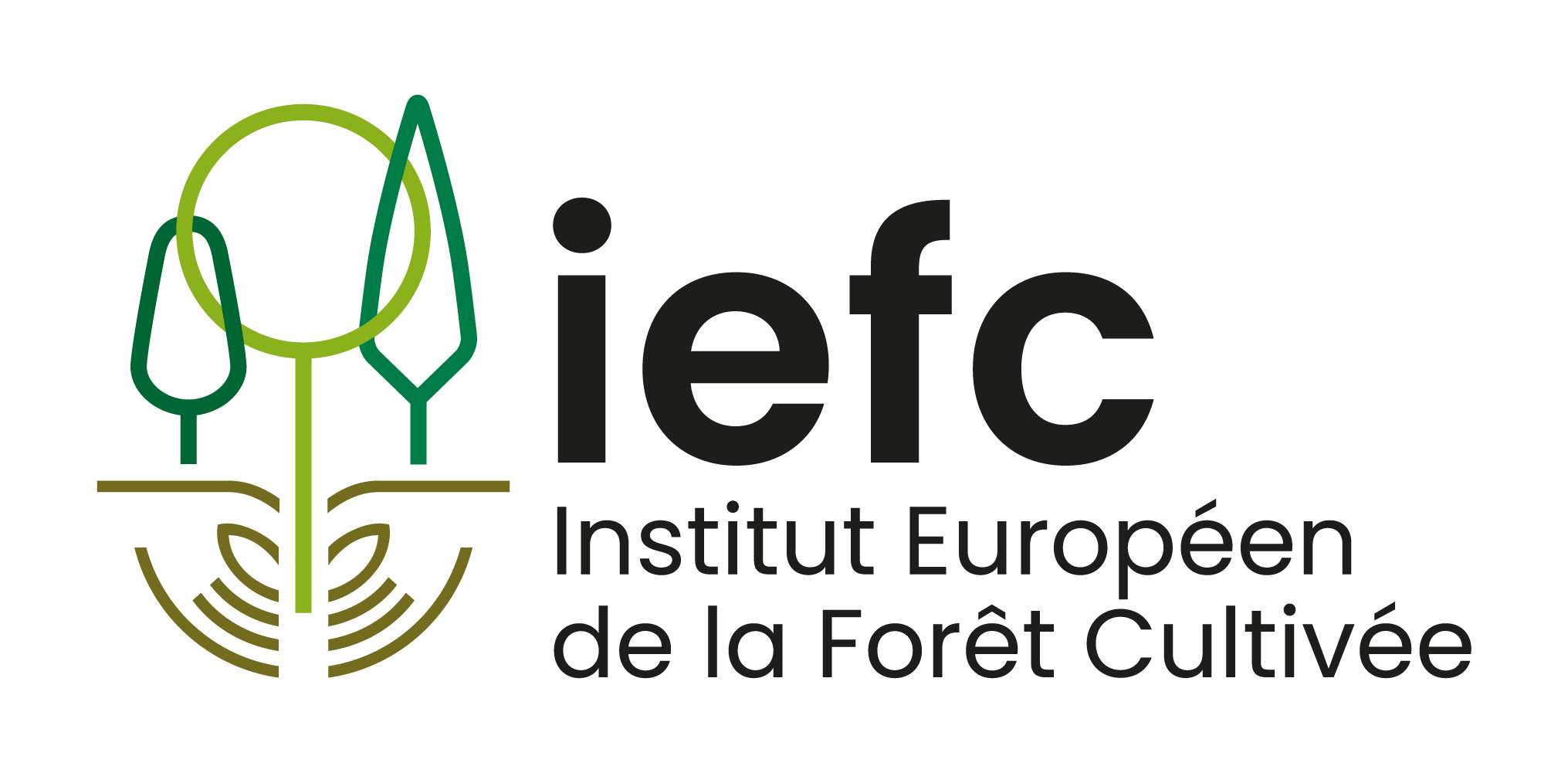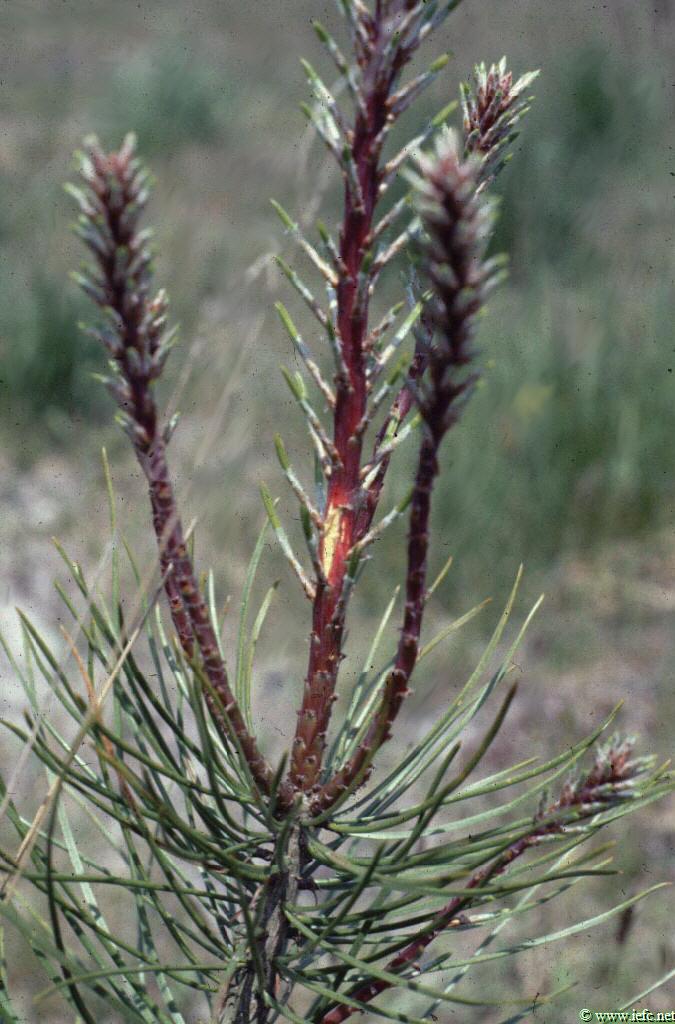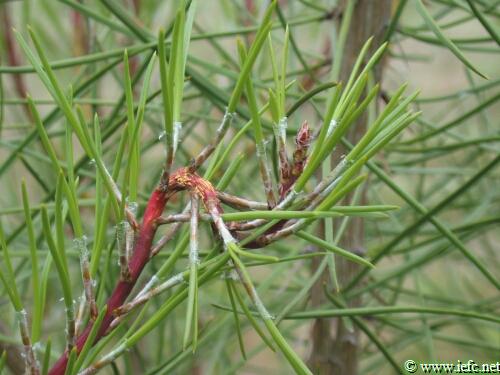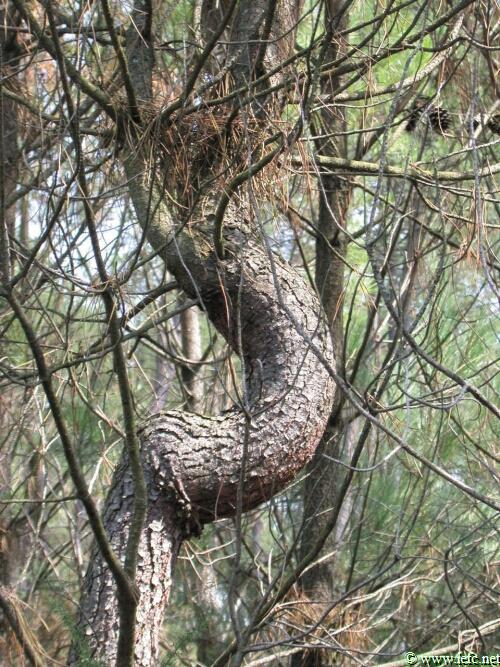Pine twisting rust
Melampsora pinitorqua (Basidiomycota, Uredinales)
Host tree
- Two-needle Pines, especially Maritime pine (Pinus pinaster) and Scots pine (P. sylvestris).
- Alternate hosts: Populus tremula, P.tremula X alba.
Identification
On young pines:- in spring, on current-year shoots presence of orange sporulating lesions (with aeciospores), sometimes preceded by some discolouration (Photo 1 and 2).
- withering and distortion of shoots that may appear with the form of a bayonet (Photo 2 and 3).
On aspen:
- in summer, orange sporulating pustules (with urediniospores) on the lower leaf surface,
- in autumn, dark pustules (with teliospores) on the lower surface of senescent and fallen leaves. Four rust species alternate on aspen and have very similar morphological features: M. pinitorqua, M. larici-tremulae (aecial host = larch), M. rostrupii (Mercurialis) and M. magnusiana (Chelidonium, Corydalis).
Damage
- Small cankers, shoot distortion and withering: when the leader shoot is affected, this results in growth loss and a bad shape of the trunk (Photo 4).
- Only young trees are affected, usually before they reach a height of 2 to 3 meters.
Biology
- Pine shoots are infected by basidiospores which are produced in spring from teliospores on dead aspen leaves on the ground.
- Aeciospores produced on pines infect aspen leaves, which results in the production of urediniospores. During summer, the multiplication phase of the fungus occurs, since urediniospores can reinfect aspens.
- The fungus overwinters in the form of teliospores on dead aspen leaves.
Risk factors
- The presence of aspens is necessary for the completion of the fungus biological cycle. It is generally assumed that risks are significant when the distance between aspens and pines is less than 200 meters.
- Infections of pines are favoured by mild and rainy weather in spring.
- The longer the shoots are, the more likely to be infected (‘target effect’). Fast growing pines usually show higher infection rates and damage.
Pest management
Preventive measurements
- Avoid the presence of aspens in the vicinity of pine plantations. However, the eradication of aspens should be considered carefully since aspen is very prone to sucker formation and suckers may be more susceptible than mature trees.
- In high hazard sites (i.e. with infected aspens), pine stands should be established at high densities in order to cope with foreseeable damage (elimination of damaged trees at the first thinnings). In those sites, fertilisation could be postponed until trees are 2-3 meters high.
Curative control
- Some fungicides, with a single application once a year, have proven to be effective against the disease but they are not authorized in forests (in France , Spain or Portugal).



